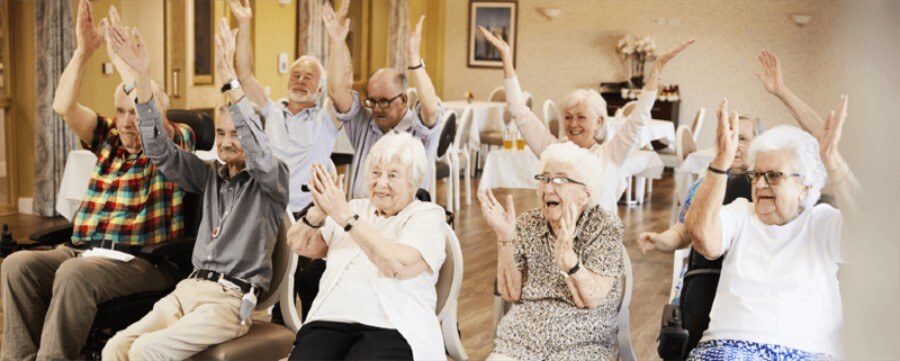Preventing Isolation in Senior Living

Moving into assisted living can open up a world of opportunities for seniors; new friends, new experiences and a new way of life, to name a few. At the same time, if a resident struggles to make connections in their new home, assisted living can feel isolating.
Assisted living programs provide a built-in social network for seniors to make friends, socialize, stay busy with fun activities and — most importantly — feel connected to their community. Read on for tips to ensure your loved one makes the most of assisted living programs.
Encouraging Participation
A community can offer fantastic programs, but it only makes a difference if your loved one is getting out of their room and taking advantage of these opportunities.
Active socialization is critical to reducing isolation and boosting cognitive and physical health. Social engagement is one of the key benefits of senior living. Seniors in assisted living communities have many more opportunities to connect with others through the built-in social activities.
“Our goal is to get mom or dad outside the apartment,” says Erin Jordan, Memory Care Clinical Specialist for Benchmark. “We don’t want them to be isolated. Instead, we foster a sense of belonging.”
One way senior communities encourage participation is by pairing residents of like interests, backgrounds, and vocations together. Communities may even seat these like-minded residents together at mealtimes so the relationships can gain momentum.
Communities also encourage participation by providing regular reminders of upcoming events via calendars, fliers, and phone calls. Through Caremerge, a care and engagement application, residents can receive automated phone calls about upcoming programs of interest.

Another way to boost participation is by welcoming family members to participate in programs with their loved one. Many communities offer family and intergenerational events. Family members are encouraged to attend regularly scheduled outings. Find out if your loved one’s community extends an open invitation for family members to join assisted living programs.
A Few Caveats
Of course, when on a virtual or physical tour of a community, you want to see residents out and about and participating in assisted living programs. But don’t be fooled if you witness an activity taking place with only a few residents.
“A program doesn’t need 20 people in order to be successful,” says Lynne Dionne, Programming Director at The Arbors of Bedford community, “It’s not just a numbers game.”
 In fact, some programs, such as book clubs and other discussion groups, are better suited to a small group. And consider the fact that some residents simply feel more comfortable in a small group program, and would prefer a more intimate setting.
In fact, some programs, such as book clubs and other discussion groups, are better suited to a small group. And consider the fact that some residents simply feel more comfortable in a small group program, and would prefer a more intimate setting.
Also, keep in mind if visiting on a Saturday or a holiday, many residents will be out with their families—so be careful not to form hard-and-fast judgments about the community based on attendance at weekend activities.
In the end, while showing up to a few assisted living programs doesn’t guarantee happiness, it does mean your loved one is at least engaging with others — which is an important step toward adapting to this new phase of life in a senior community.


